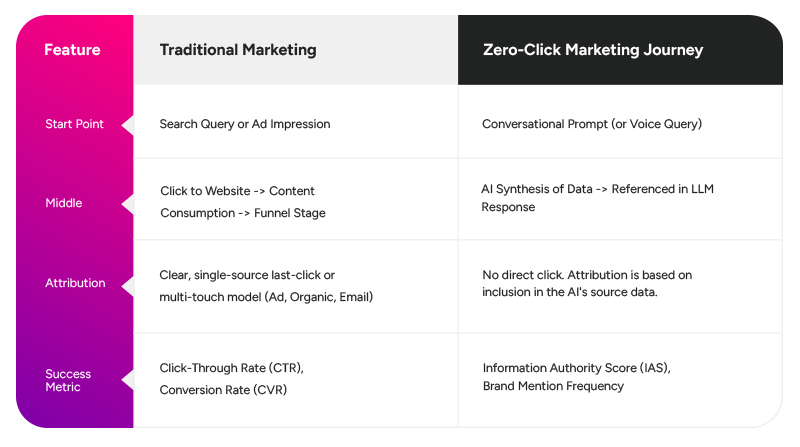For two decades, SEO has been the default playbook for marketers trying to win visibility in search. Rankings, backlinks, keywords. The rules were clear, even if the competition was fierce.
That landscape has shifted. Generative AI is no longer on the horizon; it’s embedded directly in consumer journeys. From Google’s AI Overviews to shopping assistants built into retail platforms, purchase decisions are being shaped by consolidated AI summaries, often at the expense of blue links.
What Is AEO?
Answer Engine Optimization (AEO) is the process of ensuring your brand, products, and partners are visible within these AI-generated outputs. Where SEO optimized for position on a search engine results page, AEO optimizes for presence in the AI’s response.
The difference is stark:
SEO → Multiple clicks, multiple opportunities for brand exposure.
AEO → A single AI-curated recommendation that can make or break visibility.
Why This Matters Now
When consumers ask AI engines “What’s the best mattress for back pain?” or “Where should I book a family holiday?” the answer is not a list of 10 links for buyers to click through. It’s a synthesized, ranked, and often brand-specific set of recommendations. If you’re absent, you’re invisible.
And invisibility comes with consequences:
- Lost share of voice compared to competitors who are consistently featured.
- Declining attribution as conversions driven by AI mentions don’t appear in click-based tracking.
- Budget erosion as channels appear underperforming when, in reality, influence is shifting upstream.
The Measurement Gap: Reframe Your Thinking
The explosive growth of AI has disrupted the familiar path to purchase, creating a new “zero-click” reality where established metrics are fundamentally changed. The chart below compares the traditional click-based journey to the zero-click marketing journey to help you better understand how the crucial moments of conversion have shifted from explicit clicks to untracked authority and citation.


The shift from SEO to AEO highlights a structural attribution gap. Meaning, legacy analytics lack the data necessary to determine:
- Brand visibility within AI-generated outputs.
- Competitive share of voice in LLM citations.
- The origin and influence of key contributing partners.
What Marketers Should Do Next
- Understand the terminology. AEO isn’t SEO with a new name. It’s a different battleground defined by AI-curated answers.
- Benchmark your visibility. Audit where and how often your brand appears in AI-generated recommendations compared to competitors.
- Treat AEO as a core KPI. Share of voice in AI outputs is fast becoming as important as rankings once were in SEO.
Your Next Step
The shift from SEO to AEO isn’t optional; it’s already reshaping consumer behavior. Marketers who understand the strategic shift and act early will be better positioned to protect budgets, defend credibility, and capture demand.
Want to talk more about your affiliate program’s AEO strategy? Get in touch with us right here.